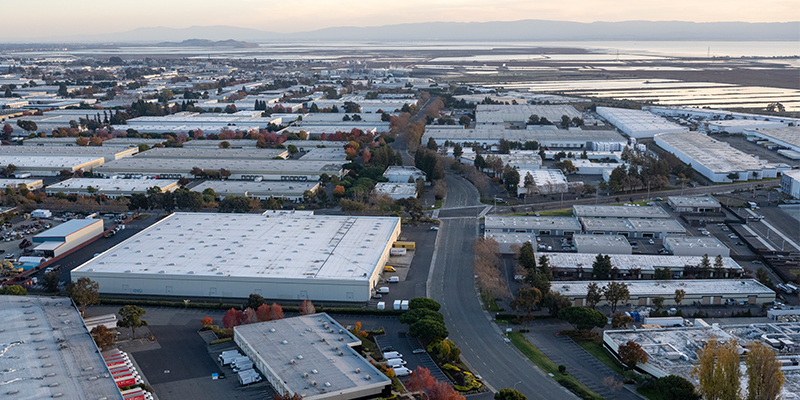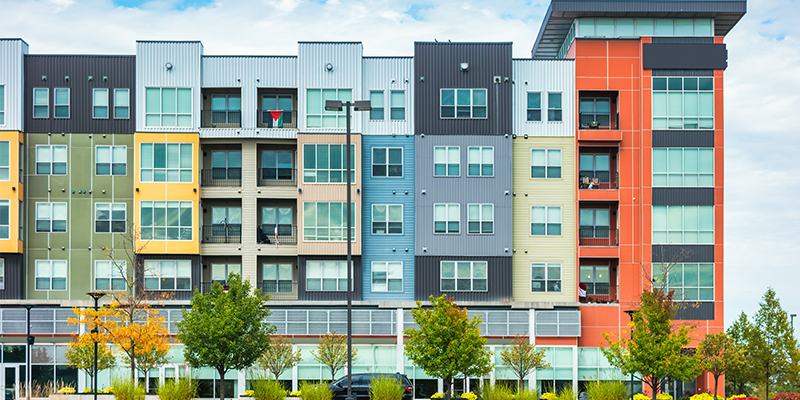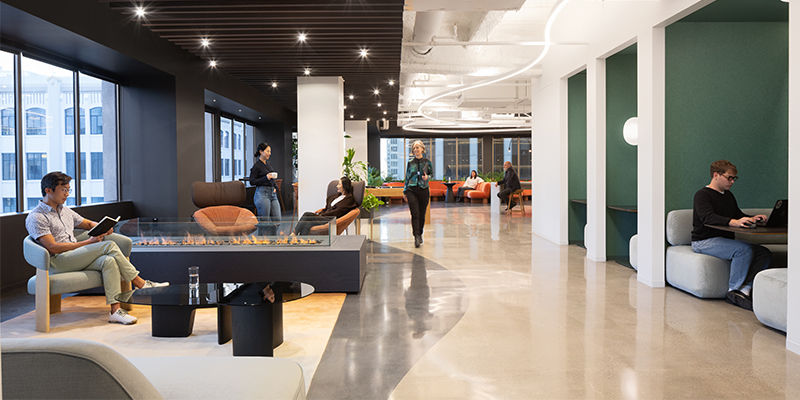By Kathryn Atkins
Population migration continues to benefit industrial markets in the Sunbelt and Mountain West. What does this portend for the Western U.S. industrial market in terms of capital flow? What macroeconomic factors could impact this sector, and what other challenges and opportunities are on the horizon? All good questions, but the bywords of the moment are “wait and see.”
Charlotte Elstob, managing director, JLL, served as moderator of the session with panelists Laura Clark, CFA, Chief Operating Officer, Rexford Industrial; Carolyn Salzer, senior director, head of research & insights, KBC Advisors; and Nicole Welch, managing director, Clarion Partners.
Another key takeaway from the conversation was a clear invitation to drill down beyond the surface level to understand the tenant needs (warehousing, manufacturing, refrigeration, etc.) and balance those against costs, regulations, labor availability and other critical considerations for commercial real estate.
Population and Labor Migration
Salzer tackled the topic of population. As it increased in Texas, Florida, California and Colorado in 2024, capital followed. This is particularly important because 25-35% of supply chain cost is labor and 30% of construction workers are immigrants.
How Are They Advising Their Clients?
The panelists agreed that tenants are in the driver’s seat. At the micro level, the advice is to understand tenant needs, whether it is commuting time to the workplace, accessibility, flexible work schedules, a gym in the basement or a decent lunchroom. At the macro level, this translates to a heavy leaning to build-to-suit, which varies from client to client, industry to industry. This is especially important as the vacancy rate still stubbornly sticks at 4%-4.5% post-pandemic across California, down from 7.1% in some markets and up to double-digit vacancies in the Inland Empire market.
But the economic story extends beyond the Southern California region. Clark mentioned that Southern California’s economy is almost equal to Brazil’s, the 11th largest economy in the world; California’s is the fifth largest, worldwide.
Increased need for housing will continue as the general commercial real estate market in Southern California has been strong for the last 20-30 years.
How Macroeconomic Factors Could Impact the Sector
While the vacancy rate of 7.5% sounds daunting, Clark indicated that a deeper dive shows the classification of buildings with the higher vacancy rates as Class C properties that are obsolete, ill-equipped, and generally not desirable. Her company sees the biggest demand for buildings in the less than 50,000-square-foot range. At the same time, prospective and existing tenants will look at the competitive supply and those buildings’ amenities before signing new leases or renewing existing leases. It’s a clear shift in demand. Meanwhile, tenant improvements have peaked, and there’s been a more recent stabilization in concessions to tenant wishes.
What Challenges and Opportunities Are on the Horizon
While the Southwest seems poised for growth, there are too many unknowns. Welch suggested the industry needs to “prepare for uncertainty,” and be more cautious, scrutinizing supply chains and the conventional wisdom tossed around in the media. For instance, with deeper research, Welch found that tariffs are not impacting the aluminum industry as much as once thought.
Inventories are a mixed bag. How much do we keep in the interest of protecting sales? How much to dump to increase turns? How can suppliers predict consumer behavior in this “wait-and-see” environment?
Charting the Best Course Ahead
The best course is to keep communications open and ask what subject matter experts are saying.
Whether it’s backup generators or a special power delivery system on time – and in time – for when the building is designed or redesigned to its final use by the tenant, every industrial building has a unique set of requirements. Tenants know they can ask for what they both need and want. The panelists mentioned that savvy tenants ask for enhanced utilities (including HVAC), and some measure of employee wellness to increase workforce retention figures. It depends on the industry and the supply of buildings, their budget and their willingness to relocate, as well as state and local regulations, especially those specific to California.
While “wait and see” keeps everyone holding their breath, the panelists appeared bullish on the future, with an uplifting optimism in the opportunities that population growth and building innovation bring to the table. They feel workplaces that embrace sustainability, seek better emission controls, incorporate green roofs, and even food trucks in the building complex’s parking lot at lunch to please tenants make investing in industrial real estate a net positive.

This post is brought to you by JLL, the social media and conference blog sponsor of NAIOP’s I.CON West 2025. Learn more about JLL at www.us.jll.com or www.jll.ca.








